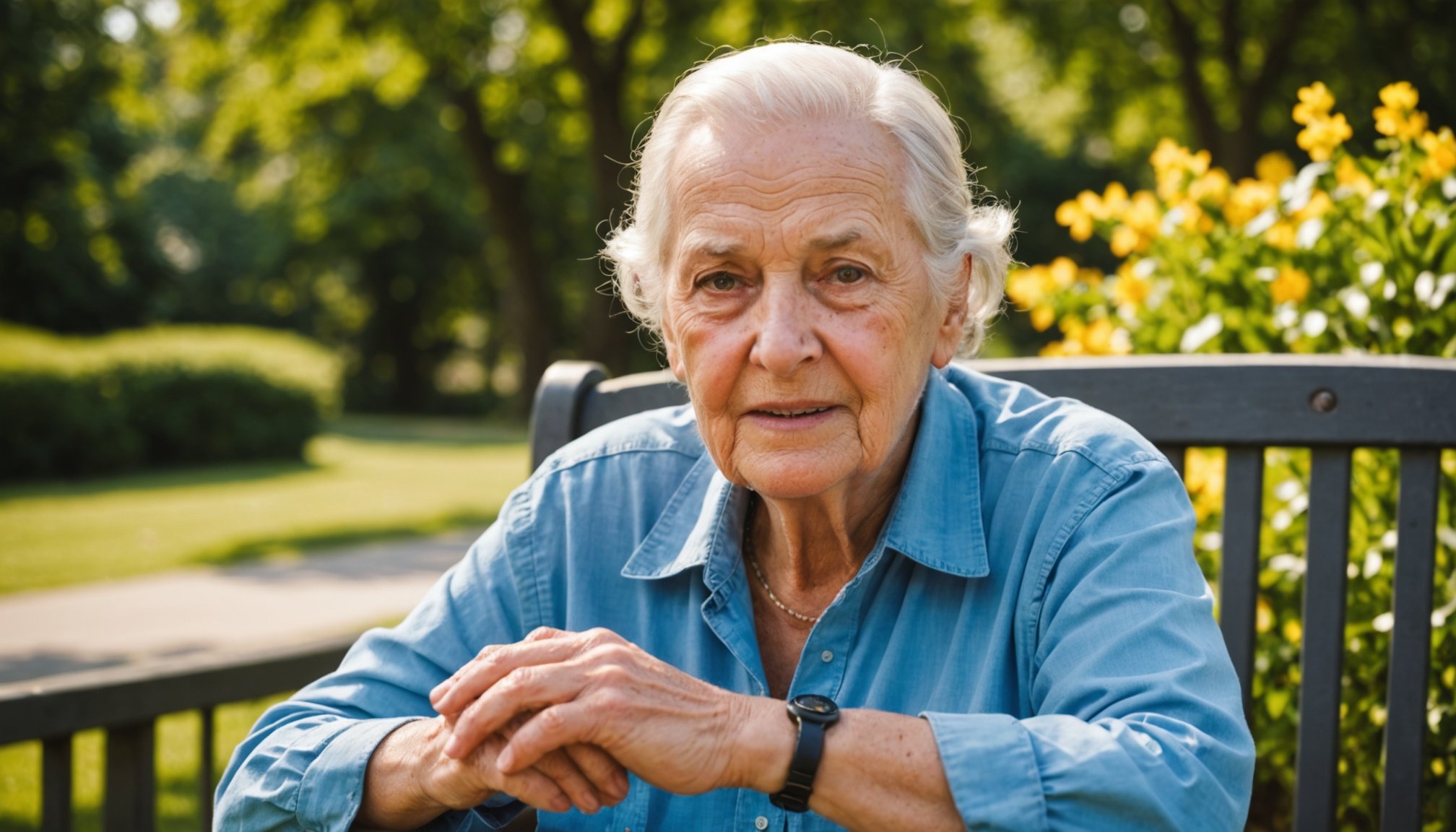As temperatures soar, seniors face unique challenges that heighten health risks. Understanding heat safety guidelines can make all the difference in staying safe. From simple hydration tips to recognizing heat-related illnesses, this guide aims to empower seniors and their caregivers. With practical strategies tailored to specific needs, let's ensure that extreme heat doesn't compromise well-being. Ready to explore effective ways to beat the heat?
Understanding Heat-Related Risks for Seniors
Heat-related illnesses pose significant threats to seniors' health, especially during extreme temperatures. Older adults are more susceptible due to various factors that increase their vulnerability.
Topic to read : Essential Tips for Seniors: Mastering Safe Stair Navigation with Confidence
Common Heat-Related Illnesses
Seniors often suffer from heat-related illnesses such as heat exhaustion, heatstroke, and dehydration. These conditions can escalate rapidly, leading to severe health consequences. Recognizing symptoms like dizziness, confusion, and rapid heartbeat is crucial for timely intervention.
Factors Increasing Vulnerability
Several factors contribute to the heightened risk of heat-related illnesses in seniors. Age-related changes, such as reduced sweat production and impaired thirst perception, compromise their ability to regulate body temperature. Chronic conditions like heart disease and medications that affect hydration further exacerbate these risks.
Also read : Effective Approaches for Enhancing COPD Management in Older Adults
Statistics on Heat-Related Incidents
Statistics reveal alarming trends in heat-related incidents among seniors. According to recent data, older adults account for a significant proportion of heat-related hospitalizations. This underscores the importance of preventive measures and awareness.
- Age-related changes: Reduced sweat production
- Chronic conditions: Heart disease, diabetes
- Medications: Diuretics, antihypertensives
Understanding these risks and implementing preventive strategies can significantly reduce the incidence of heat-related illnesses in seniors, safeguarding their well-being during extreme temperatures.
Hydration Strategies for Seniors
Ensuring proper hydration is crucial for seniors, particularly during extreme heat. Dehydration can lead to severe health issues, making it vital to follow hydration tips.
Importance of Hydration
Staying hydrated helps seniors maintain body temperature and supports vital physical functions. During hot weather, the risk of dehydration increases, necessitating a focus on fluids for seniors.
Recommended Daily Fluid Intake
Experts recommend that older adults consume at least 8-10 cups of fluids daily. This can include water, herbal teas, and other non-caffeinated, non-alcoholic beverages. Monitoring fluid intake is essential to ensure seniors stay hydrated.
Tips for Encouraging Fluid Intake
- Set reminders: Use alarms or apps to prompt regular drinking.
- Flavor water: Add slices of lemon or cucumber for taste.
- Easy access: Keep water bottles within reach at all times.
- Variety: Offer a range of beverages to prevent monotony.
Encouraging seniors to drink more fluids can be challenging, but these strategies can make it easier. By focusing on hydration tips and understanding the importance of staying hydrated, caregivers can better support seniors' health during extreme heat.
Recognizing Signs of Heat-Related Illnesses
Understanding the early warning signals of heat-related illnesses is crucial for timely intervention.
Key Symptoms
Heat exhaustion symptoms often include heavy sweating, muscle cramps, and dizziness. These symptoms indicate the body's struggle to cool itself. In contrast, heat stroke signs are more severe, featuring confusion, a rapid heartbeat, and hot, dry skin. Recognizing these early warning signals can prevent dangerous escalation.
Differences Between Heat Exhaustion and Heat Stroke
While both conditions result from excessive heat exposure, their severity differs. Heat exhaustion is milder and can progress to heat stroke if untreated. Heat stroke is a medical emergency, marked by a body temperature above 103°F. Understanding these differences is vital for effective response.
Importance of Early Recognition and Response
Timely identification of heat exhaustion symptoms and heat stroke signs can save lives. Quick action, such as moving to a cooler place and hydrating, is essential.
- Heat Exhaustion Symptoms: Sweating, cramps, dizziness
- Heat Stroke Signs: Confusion, rapid heartbeat, dry skin
- Early Warning Signals: Recognize and respond promptly
By being vigilant and informed, caregivers can ensure the safety and well-being of seniors during extreme heat conditions.
Preventive Measures for Heat Safety
Implementing preventive strategies is essential for ensuring heat safety among seniors.
Keeping Cool Indoors
Maintaining a comfortable indoor environment is crucial. Use fans or air conditioning to circulate air and reduce room temperature. Consider closing blinds or curtains during peak sun hours to prevent heat buildup. Staying in shaded areas can significantly enhance heat safety.
Recommended Clothing and Accessories
Choosing the right clothing can make a difference. Opt for lightweight, loose-fitting garments made of breathable fabrics like cotton. Wide-brimmed hats and sunglasses offer additional protection from the sun, promoting heat safety. Accessories such as cooling towels can further aid in keeping body temperature down.
Scheduling Outdoor Activities
Plan outdoor activities during cooler parts of the day, such as early morning or late evening. This minimizes exposure to extreme temperatures and enhances heat safety. Encourage seniors to take frequent breaks in shaded or air-conditioned areas when outdoors.
- Lightweight clothing: Breathable fabrics
- Cooling accessories: Towels, hats
- Activity timing: Early morning, late evening
By incorporating these preventive strategies, caregivers can significantly improve heat safety for seniors, reducing the risk of heat-related illnesses.
Creating a Safe Indoor Environment
Ensuring a comfortable and secure living space for seniors during extreme heat is vital.
Setting Up Air Conditioning or Fans Effectively
Properly setting up air conditioning or fans is crucial for a safe indoor environment. Ensure that air conditioning units are serviced regularly to maintain efficiency. Position fans strategically to enhance airflow without causing drafts. This setup not only cools the space but also ensures even distribution of air, maintaining a comfortable temperature.
Importance of Shading Windows and Doors
Shading windows and doors plays a significant role in home safety during hot weather. Use curtains, blinds, or reflective films to block out direct sunlight. This simple step can reduce indoor temperatures significantly, contributing to a cooling strategy that minimizes reliance on air conditioning.
Utilizing Cool Baths or Showers
Incorporating cool baths or showers into daily routines can help regulate body temperature. This method provides immediate relief from heat, supporting overall home safety. Encourage seniors to take cool baths during peak heat hours as part of a comprehensive cooling strategy.
- Air Conditioning: Regular maintenance, strategic fan placement
- Shading: Use curtains, blinds, films
- Cool Baths: Integrate during peak heat times
By implementing these cooling strategies, caregivers can create a safe indoor environment that protects seniors from heat-related risks.
Role of Caregivers and Family Members
Supporting seniors during extreme heat conditions requires vigilance and proactive measures.
Monitoring Seniors During Heat Waves
Caregiver responsibilities are crucial during heat waves. Regularly checking on seniors can prevent heat-related illnesses. Use technology like smart thermometers to monitor indoor temperatures. Encourage seniors to stay hydrated and observe for any signs of heat exhaustion.
Encouraging Regular Check-Ins and Communication
Frequent communication is key. Family support plays a significant role in ensuring seniors' well-being. Establish a routine of daily check-ins, either in person or through phone calls. This consistent contact helps monitor health conditions and provides emotional support.
Creating a Support Network for Seniors
Building a support network enhances safety. Collaborate with neighbors, friends, and community services to form a reliable network. This network ensures someone is always available to assist seniors. Emphasize the importance of monitoring seniors and sharing responsibilities among the network.
- Caregiver Responsibilities: Regular check-ins, hydration reminders
- Family Support: Daily communication, emotional backing
- Support Network: Involvement of community, shared duties
By focusing on these strategies, caregivers and family members can effectively safeguard seniors during extreme heat, ensuring their health and comfort.
Emergency Response Strategies
Immediate action is crucial during heat-related emergencies.
Responding to Heat Exhaustion and Heat Stroke
In the event of heat exhaustion, move the individual to a cooler environment and encourage them to drink water. Apply cool, wet cloths to the skin. If symptoms persist, seek medical advice. Heat stroke requires urgent action: call emergency services immediately. While waiting, try to cool the person by any means available, such as ice packs or a cool bath.
Importance of Having a Plan
Having a clear emergency plan is essential. It ensures quick and effective responses during heat-related emergencies. Create a checklist of procedures and necessary supplies, such as water, fans, and a first aid kit. Regularly review and practice this plan with all caregivers and family members involved.
When to Seek Medical Attention
Knowing when to seek medical attention can save lives. If a senior exhibits symptoms of heat stroke, such as confusion or unconsciousness, contact emergency services immediately. Heat exhaustion symptoms that do not improve with initial care also warrant professional medical evaluation.
- Emergency Procedures: Move to cool areas, hydrate
- Heat-Related Emergencies: Recognize signs, act swiftly
- First Aid: Cool cloths, ice packs, emergency services
By understanding these emergency procedures, caregivers can effectively manage heat-related emergencies and ensure seniors' safety.
Community Resources and Support
Community involvement is vital for senior safety during extreme heat.
Overview of Community Programs
Communities offer various programs for seniors to help them cope with extreme heat. These initiatives often include senior services such as transportation to cooling centers, meal delivery, and wellness checks. By participating in these programs, seniors can access vital support and resources.
Accessing Local Cooling Centers
Local resources like cooling centers are crucial during heatwaves. Seniors can find these centers through community bulletins or by contacting local senior services. Cooling centers provide a safe, air-conditioned environment, reducing the risk of heat-related illnesses.
Building Community Awareness
Raising community awareness about senior safety is essential. By organizing workshops and distributing informational materials, communities can educate residents on the importance of supporting seniors during extreme heat. This collective effort ensures that seniors receive the help they need.
- Community Programs: Transportation, wellness checks
- Local Resources: Cooling centers, meal delivery
- Community Awareness: Workshops, informational materials
Community support, combined with senior services and local resources, plays a pivotal role in safeguarding seniors during extreme heat conditions. By enhancing community awareness, we can foster a safer environment for our elderly population.
Long-Term Health Considerations
Examining the effects of extreme heat on senior wellness and chronic conditions.
Impact of Extreme Heat on Chronic Health Conditions
Extreme heat can exacerbate existing chronic conditions in seniors, such as heart disease and diabetes. The body's struggle to maintain a stable temperature during heatwaves can lead to complications, affecting overall senior wellness. Conditions like hypertension may worsen, requiring increased medical attention.
Strategies for Long-Term Heat Safety
Implementing long-term heat safety strategies is crucial for protecting seniors' health. Encourage the use of air conditioning and staying indoors during peak heat. Regularly reviewing medications with healthcare providers ensures they do not increase heat sensitivity.
- Air Conditioning: Regular use during heatwaves
- Medication Review: Consult healthcare providers
- Indoor Activities: Limit outdoor exposure
Importance of Regular Health Check-Ups
Regular health check-ups become vital during summer months to monitor the impact of heat on chronic conditions. These check-ups help in adjusting treatment plans and ensuring medications are appropriate for high temperatures.
Senior wellness benefits significantly from proactive health management, reducing risks associated with extreme heat. By focusing on these strategies, caregivers can enhance long-term health outcomes for seniors.











